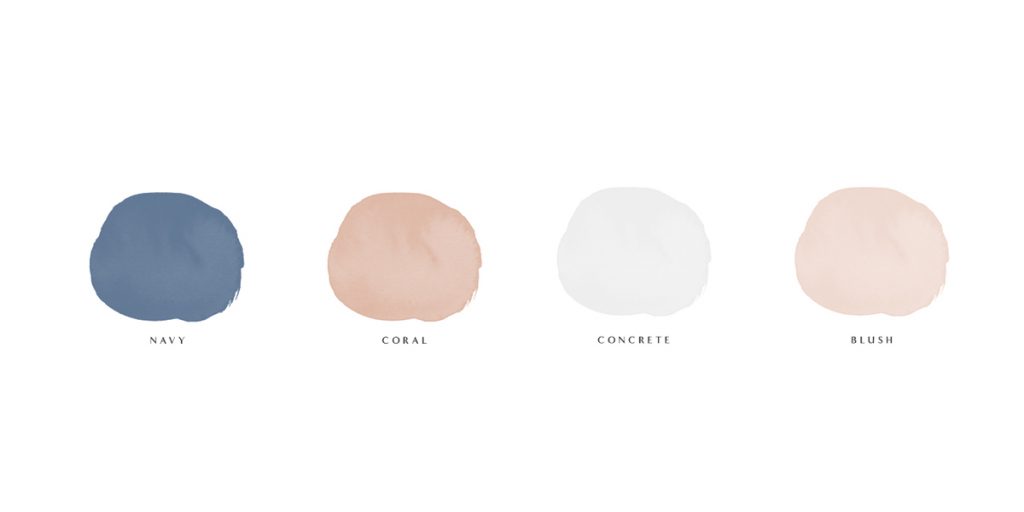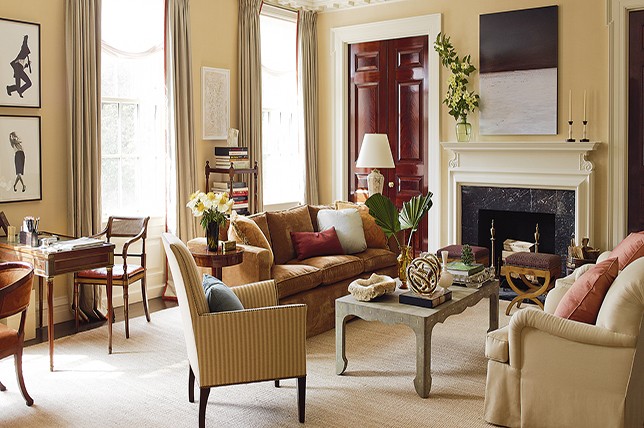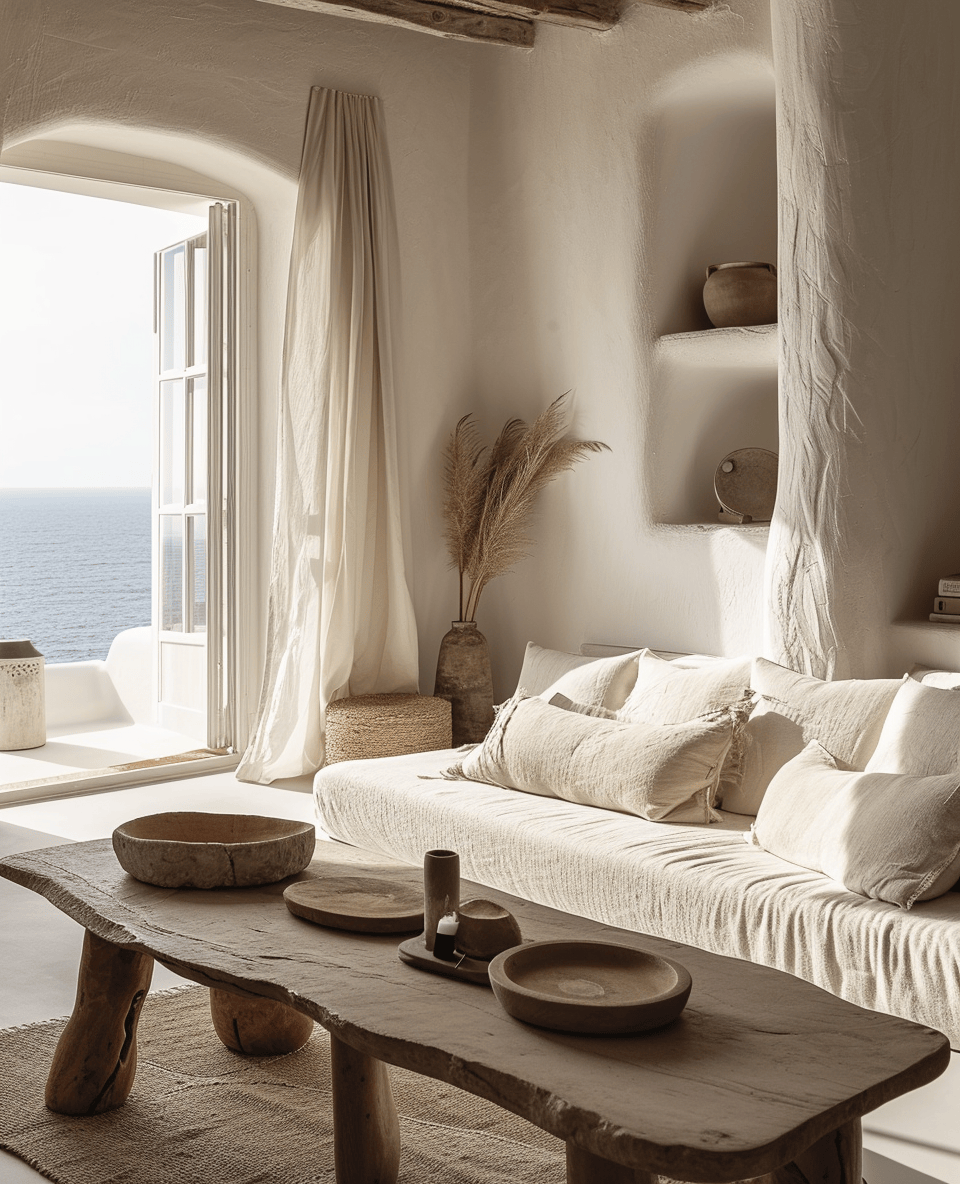
Types Of Home Decor Styles
Share
What Are The Different Types of Home Decor Styles?
Home decor styles can fall into many different categories based on colour, material, styling etc. Here is a guide to help you understand the different types of home decor styles. Overwhelmed by choice and want to find your style? Use our free quiz.
Modern Home Decor

Modern interior design priorities functional living within a contemporary setting. Characterised by clean lines, simplicity and a focus on utility, modernism permeates every design element. From the colour scheme and furniture selection to the floor plan and decorative choices, the aesthetic embodies innovation and progress. Open floor plans, neutral colour palettes and sleek furniture are hallmarks of the modern style. Notably, various established design styles can be adapted to incorporate modern elements. Rustic, minimalist, mid-century modern and even traditional aesthetics all possess inherent transitional qualities that can be leveraged to create a modern interpretation. This transformation often involves the strategic incorporation of key features – modern furniture selections, neutral wall colours and an emphasis on functionality. For instance, a rustic decor can be transformed into a modern rustic decor, while a Victorian home can find new life as mid-century modern. Similarly, Scandinavian design can evolve into modern minimalism through the introduction of these core principles.
Key characteristics of modern home decor
- Modern homes often favour open floor plans that connect different living areas like the kitchen, dining room and living room
- Neutral colours like white, beige, grey and black. This creates a sense of light, airiness and allows other design elements to stand out. Sprinkles of colour can be incorporated with accents.
- Every piece of furniture and decor in a modern space should serve a purpose. There's a focus on minimalism and avoiding clutter. Furniture tends to be sleek and multifunctional.
- Geometric shapes like squares, rectangles, circles and triangles are frequently used in furniture, lighting, artwork etc
- Modern furniture.
- When it comes to lighting you should consider lighting fixtures with simplistic design. Large windows and skylights are preferred for natural light, while artificial lighting is used strategically to create a warm and inviting atmosphere. Pendant lights with clean designs, sconces with circular shapes or structures with straight lines and track lighting are popular choices.
- Natural materials like wood, tile, marble, stone and wool to bring warmth and texture to the space. Wood might be seen in furniture, flooring or exposed beams while stone, marble or concrete could be used for countertops, backsplashes or flooring, Clean lines and smooth surfaces is an important feature.
- Seamless incorporating of eco-friendly elements. This could involve using recycled materials, energy efficient appliances or furniture made from sustainable sources.
Minimalist Home Decor

Minimalist decor, which is the opposite of maximalist decor, is all about keeping things simple. Minimalist room decor often feature uncluttered spaces, neutral colour palettes and furniture with clean lines. Since spacing is a problem we face with modern homes, the modern minimalist interior design aesthetics must factor in home decor ideas for small homes not only to make the space feel cosy and personal but do so while reducing the number of items to the bare essentials.
Key characteristics of minimalist room design
Limited/neutral colour palette or natural pastel hues

- Furniture is chosen for its functionality and avoids excessive ornamentation. Think simple, sleek silhouettes, clean lines, sharp angles and uncluttered surfaces.
- Natural materials like wood, stone and wool bring warmth and texture to the space while reflecting a connection to nature.
- Uncluttered spaces, every item should serve a purpose and contribute to the overall functionality of the space.
- Every element, from furniture to decor, should have a clear purpose.
- Lighting is very important to set the mood of the room, natural light is preferred, so large windows and skylights are common. Artificial lighting is used strategically to create a warm and inviting atmosphere, often featuring simple and clean lined fixtures.
- Add greenery to your living space
- Simple wall art
Scandinavian

Scandi home decor is all about light, air and functionality. Scandinavian interior design style is a combination of various design styles that evolved in the 20th century in the five Nordic countries of Norway, Sweden, Denmark, Finland and Iceland. Scandi house decor often feature white walls, wooden furniture and hints of colour (though not very common). Items are bare ornaments, rounded furniture with organic and clean detailing and dominantly black and white colour palettes. It is often considered a blend of minimalism and mid-century styles.
Key characteristics of Scandinavian
- White is often the dominant colour, sprinkle of light grey, beige and black is used for contrast.
- Wood is the most commonly used material in Scandinavian design, followed by stone, wool and leather. These materials bring warmth and texture to the space, and they also reflect the connection to nature that is important in Scandinavian culture.
- Clean lines, simple shapes and uncluttered designs.
- Black sculptural furniture can create a dramatic, impactful contrast.
- Every piece of furniture in a Scandinavian home should have a purpose. This is in line with the Scandinavian philosophy of "hygge," which emphasises cosiness, simplicity and functionality.
- Natural light is very important in Scandinavian design, so large windows and skylights are common. Artificial lighting is also used strategically to create a warm and inviting atmosphere.
Traditional

Traditional decor is more formal and ornate than modern. It is a timeless design style that evokes a sense of history and sophistication, drawing inspiration from European and American styles of the 17th, 18th and 19th centuries. However it is not rooted in any specific period or era.Traditional homes often feature dark wood furniture, rich fabrics and classic artwork. The interiors have clean straight lines with timeless and functional furnishings. Traditional design style is used to create a home that is inviting and warm.
Key characteristics of traditional
- While neutral tones can be used as a base, traditional decor often incorporates richer jewel tones like emerald green, ruby red and sapphire blue. Bold colours may be used as accents or on statement pieces.
- This home decor style feature details that evoke a sense of history and grandeur with ornate details and architectural elements. This can include crown molding, wainscoting, built in bookcases and fireplaces. Furniture may have intricate carvings, cabriole legs or button tufted upholstery.
- Furniture is often arranged symmetrically around a focal point, such as a fireplace or piece of art. This creates a sense of equilibrium and visual stability.
- High-quality, timeless materials is important and furniture is often crafted from solid wood like mahogany, cherry or maple. Fabrics like velvet, silk and damask add a touch of luxury and texture.
- Antiques and heirloom pieces.
- Classic artwork such as oil paintings, landscape prints and botanical illustrations are common choices for wall art. Traditional textiles may include oriental rugs, damask curtains and throw pillows with intricate patterns.
- Layered rugs and textiles involves placing a patterned rug over a larger sisal rug or using throw pillows and blankets with different textures and patterns.
Bohemian

Boho home decor is all about expressing your individuality. Boho decor often feature a mix of patterns, colours and textures. They may also include vintage finds, global inspired decor and plenty of plants.
Key characteristics of boho decor
- Boho embraces a vibrant mashup of patterns and textures. Think floral prints next to paisleys, woven throws alongside velvet cushions and macrame wall hangings above a chunky knit blanket.
- Natural tones like brown, beige and green often form the base and is accented with hints of jewel tones or brighter colours like mustard yellow or burnt orange.
- Abundance of plants.
- Boho celebrates cultural diversity. This can be reflected in woven tapestries from faraway lands, kilim rugs or mud cloth throw pillows. Artwork might feature abstract patterns, rich tapestries or photographs depicting wanderlust.
- Layering rugs, throws and pillows; think mismatched area rugs, a patchwork quilt draped over the sofa and a multitude of throw pillows with varying textures.
- Reclaimed and vintage furniture such as vintage chaise lounge. reupholstered in a bold fabric, a reclaimed wood coffee table or a flea market find given a new lease on life with a fresh coat of paint.
- Personal touches and collections in the form of travel souvenirs, collections of seashells or feathers or handmade crafts that reflect your unique style.
- String lights, floor lamps with woven shades and natural light.
Farmhouse Home Decor
:max_bytes(150000):strip_icc():format(webp)/French-country-kitchen-599471710d327a00107ea084.jpg)
Farmhouse decor is inspired by rustic farmhouses. Farmhouse homes often feature natural materials like wood and stone, shiplap walls and vintage furniture.
Key characteristics of farmhouse
- Farmhouse relies heavily on neutral tones like white, beige and grey while accents of black or natural wood tones can be incorporated for depth and contrast.
- Shiplap adds a touch of rustic charm and texture to walls. It can be used throughout the house or as an accent wall in specific areas like the kitchen or bathroom.
- Wood is seen in furniture, flooring, beams and exposed cabinetry, while stone and brick are often used for countertops, backsplashes and fireplaces.
- Vintage touches and distressed finishes adds a sense of history and lived in character. Think antique clocks, weathered sideboards or wrought iron chandeliers.
- Opt for pieces made from natural materials with a focus on practicality.
- Woven baskets, rugs and throws add warmth; texture made from jute, sisal or wool.
- Metal accents add a touch of industrial chic and complement the rustic charm. This could include galvanised metal buckets, lighting fixtures or cabinet hardware
- Farmhouse lighting is both functional and stylish. Pendant lights over kitchen islands or sinks, sconces flanking a fireplace and rustic chandeliers are popular choices. Lanterns can also add a charming touch.
Industrial Home Decor
 Industrial decor is inspired by old factories and warehouses. Industrial homes often feature exposed brick walls, metal accents and vintage lighting.
Industrial decor is inspired by old factories and warehouses. Industrial homes often feature exposed brick walls, metal accents and vintage lighting.
Key characteristics of industrial
- Exposed brick walls
- Rustic wood and exposed metal
- An unfinished look with exposed metal beams, pipes and ducts
- Furniture has a antique or vintage design/feel
- Colour palette includes metallic colour palette such as brushed silver, copper and brass, gold, black, browns and dark navy blues
- Distressed leather
- Edison light bulb, cage, string or large metal or glass dome ceiling light
- Open layout
- Copper cookware, concrete countertops and concrete floors
Coastal Home Decor

Coastal decor is all about bringing the feel of the beach indoors. Coastal homes often feature light and airy colour palettes, natural materials like seagrass and rattan and nautical-inspired decor.
Key characteristics of coastal decor
- Maximise natural light with large windows or skylights
- Neutral colour palette such as beige, white and grey. You can also incorporating various shades of blue to reflect the ocean
- Wooden furniture and rattan accents
- Nautical design elements such as anchors, ropes or ship wheels, stripped patterns, coral and shells decorative items, coastal plants such as palms or sea grass, driftwood etc
- Artwork of the ocean, beach or marine life
- Jute or sisal rugs
Mid-century Modern

Mid-century modern decor is inspired by the design of the 1950s and 1960s. Mid century modern interior design often feature clean lines, functionality, organic shapes and a touch of futuristic optimism. Furniture mid century modern is simple and elegant.
Key characteristics of mid-century modern
- Mid century furniture is simple and elegant. Lighting and even artwork favour geometric shapes like squares, circles and rectangles. Organic curves are sometimes incorporated but tend to be subtle, particularly in furniture silhouettes or sculptural elements. Think boomerang coffee tables, kidney shaped sofas or lamps with gently curved bases.
- Similar to modern design, mid-century modern decor relies on neutrals like white, beige and grey. Colour can be used sparingly, with bold jewel tones like mustard yellow, orange or teal being popular choices.
- Excess is shunned in favour of sleek, multifunctional pieces. Think storage ottomans, coffee tables with hidden compartments and chairs with clean lines that prioritise comfort and form.
- Walnut or teak furniture with tapered legs, exposed brick walls and brass or chrome accents.
- Unique and sculptural statement lighting such as pendants with sputnik arms, atomic inspired chandeliers and sleek table lamps with tripod bases are all hallmarks of the style.
- Large windows and sliding glass doors blur the lines between indoors and outdoors.
- Abstract expressionist paintings and geometric prints are popular choices for wall art featuring bold colours, graphic elements and colour that reflects optimism.
Eclectic Home Decor

Eclectic decor is all about mixing and matching different styles. Eclectic maximalist decor can be a lot of fun, it's still important to maintain a sense of balance and overall cohesiveness. This can be achieved through a unifying colour palette, a focus on texture or by ensuring all elements contribute to a comfortable and inviting atmosphere.. Eclectic decor is about telling your story, every object and piece of furniture should hold personal meaning or reflect your interests.
Key characteristics of eclectic
Eclectic furnishings thrives on defying expectations by mixing and matching different styles. Don't be afraid to combine elements from seemingly disparate styles, like a mid-century sofa paired with a rustic coffee table or a vintage rug juxtaposed with modern artwork.
Eclectic decor welcomes textiles, furniture and artwork from various cultures. Think Moroccan poufs, Indian tapestries or a collection of travel souvenirs displayed with pride.
Blend vintage finds with contemporary pieces. For example, a chrome lamp lighting a distressed antique dresser or a modern throw pillow adorning a classic wingback chair.
Unexpected accents such as statement chandelier in a bohemian living room, a pop art sculpture displayed next to a traditional grandfather clock – these unexpected elements add personality and spark conversation.
Mixing textures and patterns is a key element of eclectic style. Think a chunky knit throw on a sleek leather sofa, a woven basket filled with velvet cushions or a room embellished with a mix of floral prints, geometric patterns and stripes.
Gallery wall displaying a mix of photography, paintings and vintage finds or a collection of seashells displayed on a rustic shelf.
Not sure of your home decor style? Take your quiz to find out, click here.
Happy decorating x
